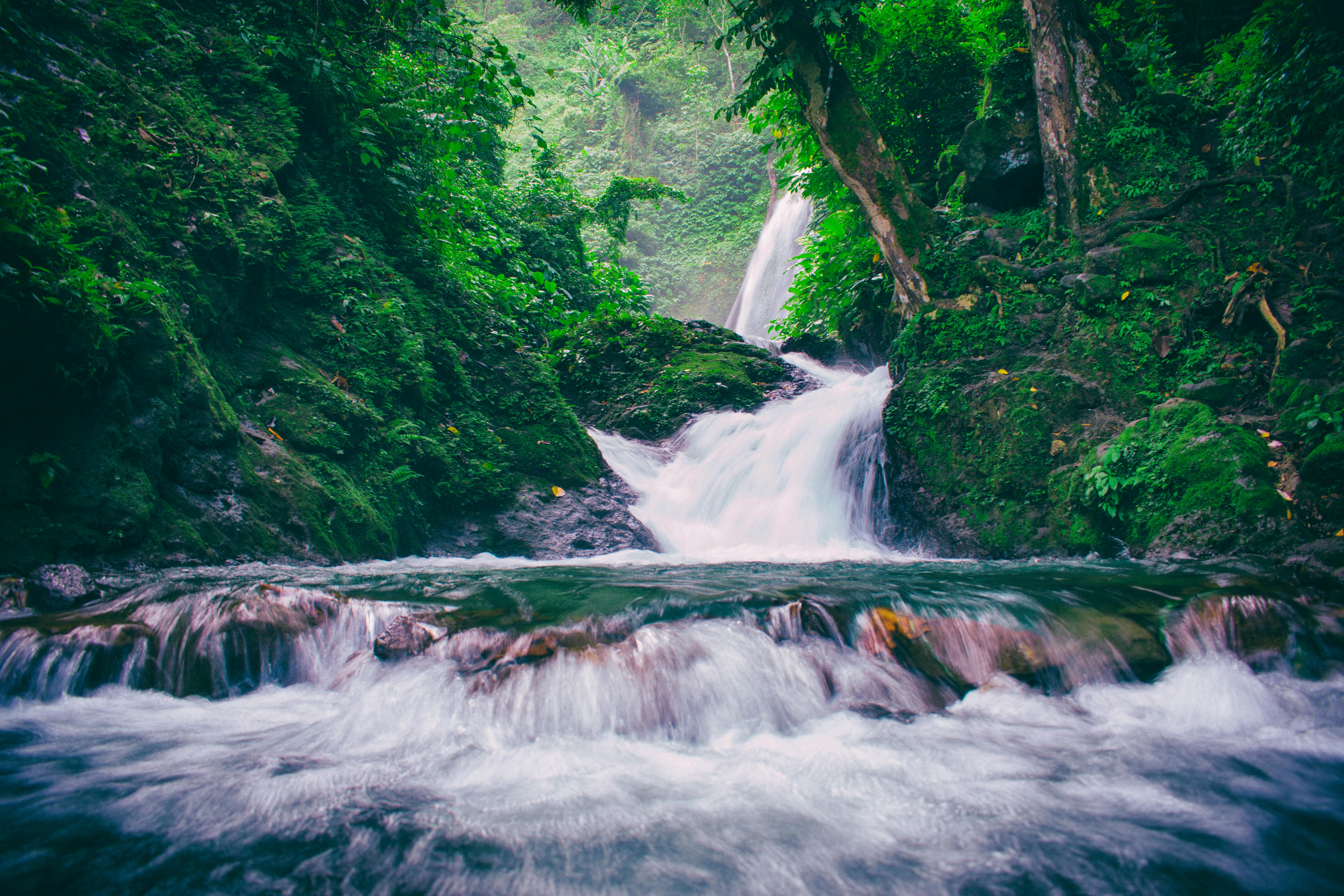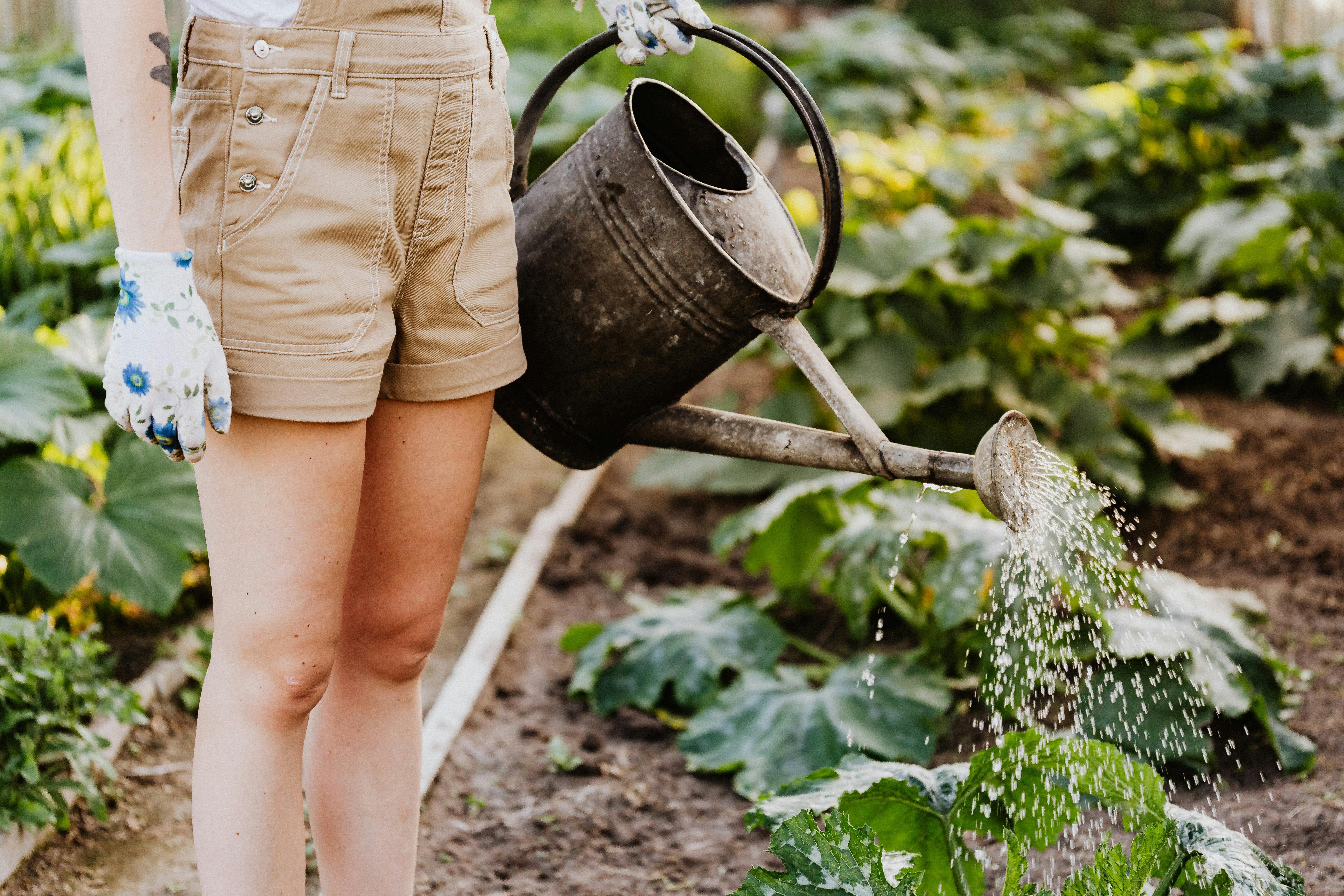Water is essential for plants to survive, but how long can they go without it? This question is of particular importance during drought conditions and other times when water is scarce. In this article, we will explore the effects of water deprivation on plants and how long they can survive without it. We will also discuss tips and tricks to help your plants make it through dry periods.It depends on the type of plant and the environment. Some plants can go for weeks without water, while others may only last a few days. Drought-resistant plants such as succulents and cacti are able to go for much longer periods without water than many other plants, while other more sensitive species will need to be watered more frequently.
Types of Plants That Can Survive Without Water
Plants typically require water to survive, yet some species have evolved to thrive without it. These plants are known as xerophytes, and they are able to withstand prolonged periods of drought by adapting their physiology and structure in order to reduce water loss. There are many types of xerophytic plants, including cacti, succulents, and certain grasses.
Cacti are perhaps the most popular type of xerophytic plants. Many cacti are native to arid regions, such as deserts and semi-deserts, where water is scarce. Cacti have adapted to the environment by developing fleshy stems that store water during times of plenty. They also have spines that protect them from animals seeking sustenance from their juicy stems.
Succulents are another type of plant that can survive without water. Succulents tend to live in dry habitats such as rock crevices or mountain slopes with little soil or rainfall. They store large amounts of water in their leaves or stems and often appear swollen when hydrated. Some succulents also develop a waxy coating on their leaves that helps them retain moisture during dry conditions.
Grasses can also survive without water for extended periods of time. Some grasses produce deep roots that reach deep into the soil for moisture when surface levels become low. Others grow slowly and become dormant during droughts until rain returns and they begin growing again. Grasses can also curl up their leaves to reduce the amount of surface area exposed to the sun and wind, which helps them conserve moisture during dry times.
Overall, many types of plants can survive without water for extended periods due to special adaptations they have developed over time. This allows them to thrive in otherwise hostile environments where rainfall is limited or sporadic throughout the year.
Plant Resilience to Drought
Drought is one of the most common environmental stressors that affects plants. Plants must adapt to drought conditions and become resilient in order to survive. There are several ways that plants can become more resilient to drought, including developing deeper root systems, reducing water loss through transpiration and increasing the efficiency of water uptake.
Deeper root systems provide plants with access to deeper layers of soil, which can contain more moisture than the surface layers during times of drought. This allows them to absorb more moisture from deeper layers and sustain themselves during periods of drought. In addition, some species have evolved longer taproots which can penetrate even further into the soil, allowing them to access even more moisture deep below the surface.
Transpiration is the process by which plants lose water through their leaves, and it can be detrimental during periods of drought. To reduce water loss through transpiration, some species have adapted by closing their stomata (the pores on their leaves) when the air is dry or hot. This helps reduce water loss and allows them to conserve more moisture for use during times of drought.
Finally, some species have evolved increased efficiency in their uptake of water from the soil. They have developed larger root systems with a greater number of root hairs that are better able to absorb moisture from their surroundings during periods of drought. This allows them to make use of even small amounts of available moisture and survive in harsher conditions than other species would otherwise be able to endure.
Overall, plants have evolved a variety of strategies for becoming more resilient in times of drought. By developing deeper root systems, reducing water loss through transpiration, and increasing the efficiency of their water uptake, they are better able to withstand periods of prolonged dryness and survive in challenging environments where other species may not be able to thrive.
Understanding Plant Transpiration
Plant transpiration is an essential process for plants. It helps to regulate their temperature, and also helps in the absorption of water and nutrients from the soil. Transpiration is the process by which water vapor is released from a plant’s leaves. This process of evaporation is driven by the sun’s energy, which causes water molecules in the leaves to evaporate into the atmosphere. The water vapor then rises into the air, carrying away heat and helping to cool down the plant. In order for a plant to properly transpire, it must have adequate access to both water and sunlight.
Transpiration is an important part of a plant’s life cycle as it helps provide necessary nutrients and moisture for growth. It also plays an important role in maintaining a healthy environment by providing oxygen and reducing carbon dioxide levels in the atmosphere. Plants release water vapor through their stomata, which are small openings on their leaves that allow them to exchange gases with the outside environment. When there is plenty of sunlight and atmospheric humidity, these stomata open up and allow more water vapor to escape from within the leaf. In dryer climates, these stomata may close up in order to conserve moisture inside of the plant.
In addition to providing essential nutrients for a plant’s growth, transpiration also helps keep its leaves clean by removing dust particles that can accumulate over time. This not only keeps them looking healthy but also prevents them from becoming susceptible to disease or infestation from pests or other organisms. The process of transpiration also helps keep a plant hydrated by bringing water up from its roots; this process ensures that its cells remain healthy and functioning properly.
Overall, understanding how plants transpire is important for keeping them healthy as well as helping maintain our environment as a whole. By ensuring that they have access to adequate amounts of both sunlight and moisture, we can help ensure that they are able to carry out this important process efficiently and effectively.
Effects of Lack of Water on Plant Health
Water is essential for the growth and health of plants. Without adequate water, plants will suffer from dehydration, which can lead to wilting, discoloration, and eventual death. The effects of inadequate water depend on the type of plant and environmental conditions. For example, some drought-tolerant plants may be able to survive in dry conditions for longer periods than other more sensitive species. In general, however, all plants require a certain amount of water to thrive. When there is insufficient water available to a plant, it can quickly become unhealthy and even die.
One key effect of not providing enough water to a plant is wilting. This is caused by the plant’s inability to take up enough water through its roots to keep the stems and leaves rigid. Wilting can be an indication that the soil is too dry or that there are other environmental factors such as too much heat or wind that are preventing the plant from taking up adequate moisture. If wilting persists despite attempts to increase soil moisture levels, then it may be time to consider replanting in a more suitable environment.
Another effect of poor watering practices is discoloration of leaves and stems. Plants deprived of sufficient water will often develop brown or yellow spots on their leaves or stems as they struggle to survive in dry conditions. Discoloration due to lack of water can also be accompanied by leaf drop or stunted growth as the plant becomes increasingly weakened over time.
In addition to physical signs such as wilting and discoloration, lack of water can also have an effect on a plant’s overall health. Plants that don’t receive enough moisture will be more prone to pests and diseases due to weakened defenses caused by dehydration. Furthermore, without adequate hydration, a plant’s ability to photosynthesize will be diminished and its growth will be stunted.
Overall, proper watering practices are essential for healthy plants. Without sufficient hydration, a plant may become stressed and develop physical symptoms such as wilting or discoloration which could eventually lead to its demise if not addressed promptly. It is important for gardeners and growers alike to understand how different environmental factors can affect their plants’ ability to take up moisture in order ensure healthy growth over time.

Signs That Your Plant is Suffering From Drought Stress
When plants are not provided with adequate water, they will start to show signs of drought stress. Plants may curl their leaves and become wilted, discolored, or brittle. Leaves may also turn yellow or brown and drop off. Some plants may produce fewer flowers or fruits than usual. The soil around the plant may become dry, hard, and cracked due to lack of moisture. In extreme cases, the plant may die if it is not given enough water in time.
It is important to keep an eye on your plants and monitor their health during periods of drought stress. If your plants start showing signs of wilting or discoloration, it is time to water them immediately. You should also check the soil around the plant for any signs of dryness or cracking. In addition, check for any yellowing or browning leaves that could indicate dehydration.
If you notice any of these signs in your plants, it is important to act quickly and provide them with adequate amounts of water. This will help them survive the drought stress and prevent further damage from occurring to your plants. Taking quick action can also help your plants recover from any damage already done due to lack of water.
Creating a Watering System
Creating a watering system is one of the best ways to keep your plants hydrated during a drought period. This involves setting up an irrigation system with an appropriate timer that will ensure that the plants are watered regularly and adequately. You may also want to consider setting up a drip irrigation system, which will allow water to be delivered directly to the roots of the plants. This can help conserve water, as it will not be wasted on evaporation or runoff. Additionally, you should ensure that your garden beds are mulched properly; this will help minimize evaporation and retain moisture in the soil.
Select Appropriate Plants
Another way to keep your plants hydrated during drought periods is to select drought-tolerant plants for your garden. These types of plants have adapted to survive in dry conditions and require less water than other types of plants. You should also consider selecting native species for your garden, as these are adapted to the local climate and can thrive with minimal water. Additionally, you should group together plants with similar water needs in order to make watering more efficient.
Mulch & Compost
Using mulch or compost is another great way to keep your plants hydrated during a drought period. Mulching can help reduce evaporation from the soil surface and also help create a more fertile environment for your plants by retaining nutrients and moisture in the soil. Compost can also aid in moisture retention by providing additional organic matter for the soil, which helps it retain more moisture for longer periods of time.
Install Drip Irrigation
Installing drip irrigation is another effective way of keeping your plants hydrated during drought periods. Drip irrigation systems deliver small amounts of water directly to the root zone of each plant, which helps prevent runoff or evaporation loss from occurring. Additionally, this type of system can help conserve water by delivering only what is necessary for each particular plant, thus reducing overall water usage.
Conserve Water
Conserving water is one of the most important things you can do when trying to keep your plants hydrated during a drought period. This includes using efficient watering techniques such as drip irrigation or soaker hoses, as well as collecting rainwater when possible and avoiding overwatering your garden beds. Additionally, you should invest in rain barrels or other water-saving tools that can help reduce overall usage and keep more moisture in the soil for longer periods of time.
The Role of Soil Moisture in Plant Survival
Soil moisture plays a critical role in the survival of plants, providing them with the necessary water and nutrients they need to grow and thrive. Without adequate soil moisture, plants are unable to absorb the essential nutrients they require for growth and will eventually die. In order to ensure optimal plant health, it is important to understand how soil moisture affects plant growth, development, and survival.
Soil moisture is essential for proper nutrient absorption by plants. When soil is dry, plants are unable to absorb essential nutrients from the soil because there is not enough water available for them to do so. As a result, these essential nutrients remain locked in the soil and cannot be used by the plant. On the other hand, when soil is too wet, water can fill up pores between particles of soil which prevents essential nutrients from being absorbed by the plant’s roots. This can lead to poor growth and reduced yields.
In addition to affecting nutrient absorption, soil moisture also affects other aspects of plant health. Dry soils can cause stress on plants as they struggle to obtain enough water for their metabolic processes. This stress can weaken their immune systems and make them more susceptible to disease or pests. Too much moisture in soils can also lead to root rot or other diseases that can stunt or even kill a plant.
It is important for gardeners and farmers alike to understand how soil moisture affects their plants in order to ensure optimal growth and development. Too little or too much moisture in soils can have a detrimental effect on their yield as well as on their overall health. They should take steps such as using mulch or drip irrigation systems in order to regulate the amount of water available for their plants’ roots so that they receive enough but not too much water for healthy growth and development.
In conclusion, soil moisture plays an important role in plant survival by providing them with essential nutrients and regulating stress levels caused by either too little or too much water. It is important for gardeners and farmers alike to understand how soil moisture affects their crops so that they can take steps such as using mulch or drip irrigation systems in order to regulate it properly for optimal growth and development of their plants.

Conclusion
The answer to the question of how long plants can go without water depends on several factors. Some plants, such as succulents, can go for weeks or even months without water, while others will suffer from dehydration within a few days. The environment can also have an effect on how long plants can survive without water. Plants in dry climates will need frequent watering to survive, while those in humid climates may be able to survive longer periods of drought. Finally, the amount of water a plant needs is determined by its size and the type of plant it is.
In conclusion, while there is no one-size-fits-all answer as to how long plants can survive without water, it is possible to determine the approximate amount of time based on the individual characteristics of each plant and its environment. By understanding these factors and giving your plants sufficient care and attention, you’ll be able to provide them with the best possible chance for survival.

